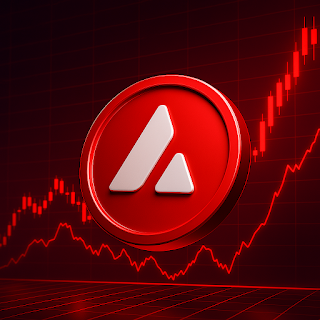1. Basic Information
- Official Name / Symbol: Avalanche (AVAX)
- Launch Date & Founders: Mainnet launched in September 2020. Developed by Emin Gün Sirer, Kevin Sekniqi, and Maofan “Ted” Yin from Cornell University (investopedia.com, en.wikipedia.org)
- Development Team: Ava Labs and open-source community
- Core Objective: Multi-chain strategy focused on scalability, sub-second finality, and flexible custom Layer 1 creation
2. Technical Features
- Three-Chain Architecture:
- X-Chain: Asset transfer chain
- C-Chain: EVM-compatible smart contract chain
- P-Chain: Validators, subnet coordination, and overall network control (en.wikipedia.org)
- Avalanche Consensus (Snowman): DAG-based probabilistic consensus with thousands of TPS and sub-second finality
- Subnet Support: Build customized, independent Layer 1 chains; supports EVM and enterprise/gaming networks
- Parallel Scalability: Powered by subprotocols like Snowflake and Snowball; active research on improvements
3. Use Cases & Functions
- Smart Contract & DApp Platform: Scalable infrastructure used in DeFi, NFTs, Web3 games, and enterprise apps
- Custom Chains via Subnets: Enterprises, governments, and game studios operate isolated chains (avax.network)
- Avalanche Bridge™: Multi-chain bridge (e.g., BTC.b) with Intel SGX-based secure architecture (support.avax.network)
- External Integrations: Partners include Uniswap, Aave, Citi, BlackRock, AWS
4. Tokenomics
- Total Supply: Maximum ~720 million AVAX (515M circulating) (avax.network, coinmarketcap.com)
- Burn Mechanism: Portion of transaction fees are burned (e.g., $16.7M burned in one week) (theblock.co)
- Staking & Governance: Validator rewards and subnet governance models
5. Market Information
- Price & Market Cap: ~$21–22 with market cap of ~$8.8–9.7B, ranking top 15
- 24-Hour Trading Volume: ~$360–512M
- Short-Term Technicals: $20.25–22.25 support/resistance; recent 4% increase and ascending channel (coindesk.com)
- Long-Term Performance: -41% over 1 year; recovering from $65 high to $21
6. Community & Ecosystem
- TVL & DApp Activity: ~$1.5B TVL (cointelegraph.com)
- Major Partnerships: AWS, Citi, BlackRock, Tixbase, Passolig (avax.network)
- Developer Support: Avalanche Academy, Codebase Incubator, and hackathons
- Enterprise Adoption: MapleStory NFT (1M tx/day), US/Turkey DMV integration cases
7. Strengths & Weaknesses
7.1 Strengths
- High-Speed & Scalable Architecture: DAG consensus and subnets provide resilience during demand spikes (osl.com)
- EVM Compatibility: Leverages Ethereum developer tools
- Sector-Specific Subnet Utility: Enables customized chains for gaming, public, and enterprise uses
- Strong Ecosystem: Expanding alliances with AWS, Citi, BlackRock, etc.
7.2 Weaknesses
- Price Underperformance: AVAX price not reflecting 70% growth in stablecoin usage (cointelegraph.com)
- Rising Competition: Competing with Polygon, Solana, and other EVM Layer 1s (coinstats.app)
- Governance & Security Risks: Subnet proliferation introduces consensus management challenges and ongoing Snowman stability research
8. Investment Perspective & Warnings
8.1 Investment Appeal
- Scalability of Application: Subnets and custom Layer 1 strategies open doors to mass adoption
- Real-World Use Cases: Enterprise integrations with AWS, DMV, ticketing showcase adoption momentum
- ETF Anticipation: VanEck fund registration indicates regulatory readiness (decrypt.co)
8.2 Risk Factors
- Ecosystem Growth Lag: Price undervaluation may persist if stablecoin TVL doesn’t translate to AVAX demand
- Intensified Competition: New Layer 1s and EVM chains pose market share threats
- Complex Network Governance: Higher operational burden with increased decentralization
- Market Volatility: ±20% monthly fluctuations possible
8.3 Strategic Recommendations
- Analyze AVAX Price vs On-Chain TVL/Yield Correlation
- Track Subnet Adoption & New Enterprise/Government Deals
- Monitor Snow Consensus Enhancements
- Adjust Positions Strategically: Consider entries/exits around $20–22 support and $23–25 resistance
✅ Conclusion
Avalanche features a three-chain structure, high-speed consensus protocol, and sector-tailored subnets as core advantages.
Adoption by AWS, Citi, and others reflects strong enterprise traction. However, price decoupling from utility, rising competition, and complex governance are notable risks.
From an expert standpoint, key strategies include expanding subnet and enterprise adoption, improving Snow consensus, and aligning pricing with on-chain metrics.




